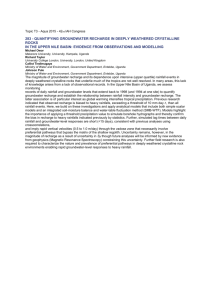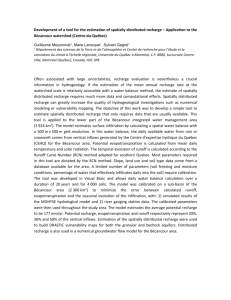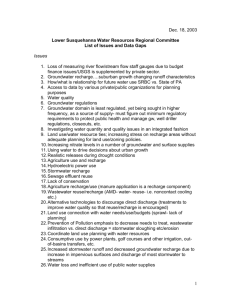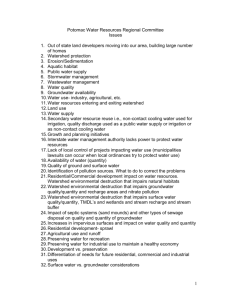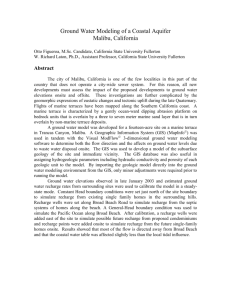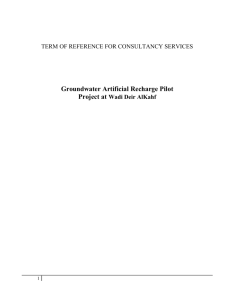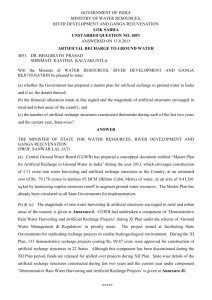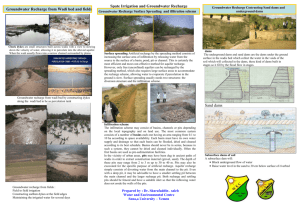Integrating Spatial Multi Criteria Decision Making (SMCDM) with
advertisement
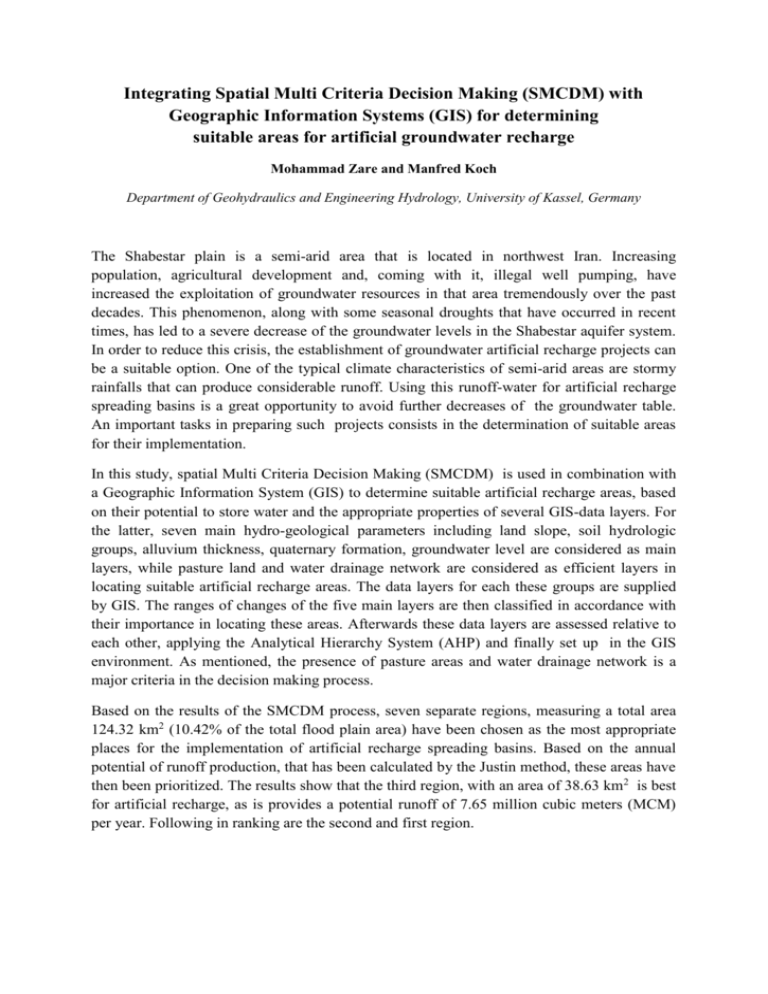
Integrating Spatial Multi Criteria Decision Making (SMCDM) with Geographic Information Systems (GIS) for determining suitable areas for artificial groundwater recharge Mohammad Zare and Manfred Koch Department of Geohydraulics and Engineering Hydrology, University of Kassel, Germany The Shabestar plain is a semi-arid area that is located in northwest Iran. Increasing population, agricultural development and, coming with it, illegal well pumping, have increased the exploitation of groundwater resources in that area tremendously over the past decades. This phenomenon, along with some seasonal droughts that have occurred in recent times, has led to a severe decrease of the groundwater levels in the Shabestar aquifer system. In order to reduce this crisis, the establishment of groundwater artificial recharge projects can be a suitable option. One of the typical climate characteristics of semi-arid areas are stormy rainfalls that can produce considerable runoff. Using this runoff-water for artificial recharge spreading basins is a great opportunity to avoid further decreases of the groundwater table. An important tasks in preparing such projects consists in the determination of suitable areas for their implementation. In this study, spatial Multi Criteria Decision Making (SMCDM) is used in combination with a Geographic Information System (GIS) to determine suitable artificial recharge areas, based on their potential to store water and the appropriate properties of several GIS-data layers. For the latter, seven main hydro-geological parameters including land slope, soil hydrologic groups, alluvium thickness, quaternary formation, groundwater level are considered as main layers, while pasture land and water drainage network are considered as efficient layers in locating suitable artificial recharge areas. The data layers for each these groups are supplied by GIS. The ranges of changes of the five main layers are then classified in accordance with their importance in locating these areas. Afterwards these data layers are assessed relative to each other, applying the Analytical Hierarchy System (AHP) and finally set up in the GIS environment. As mentioned, the presence of pasture areas and water drainage network is a major criteria in the decision making process. Based on the results of the SMCDM process, seven separate regions, measuring a total area 124.32 km2 (10.42% of the total flood plain area) have been chosen as the most appropriate places for the implementation of artificial recharge spreading basins. Based on the annual potential of runoff production, that has been calculated by the Justin method, these areas have then been prioritized. The results show that the third region, with an area of 38.63 km2 is best for artificial recharge, as is provides a potential runoff of 7.65 million cubic meters (MCM) per year. Following in ranking are the second and first region.



